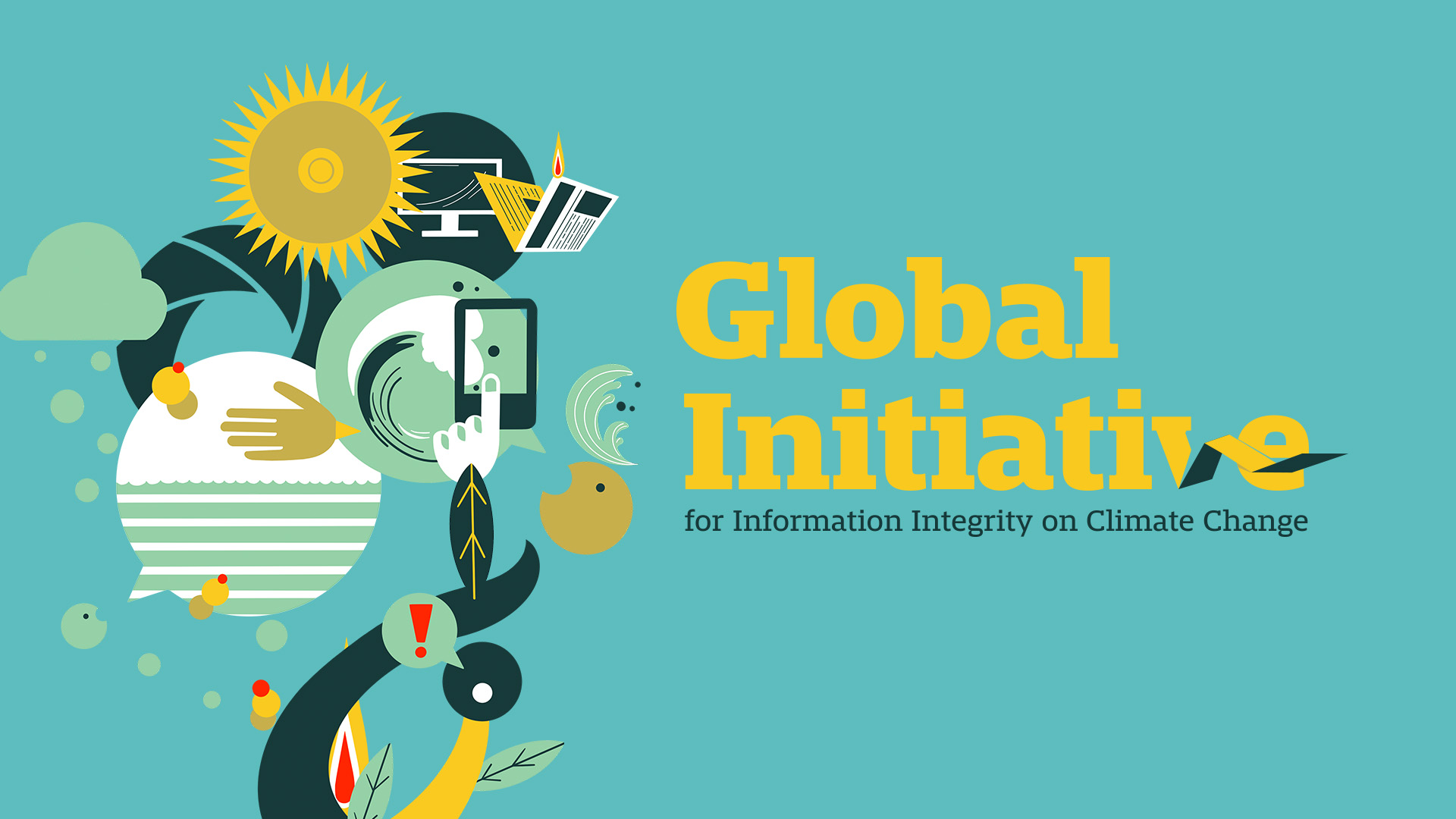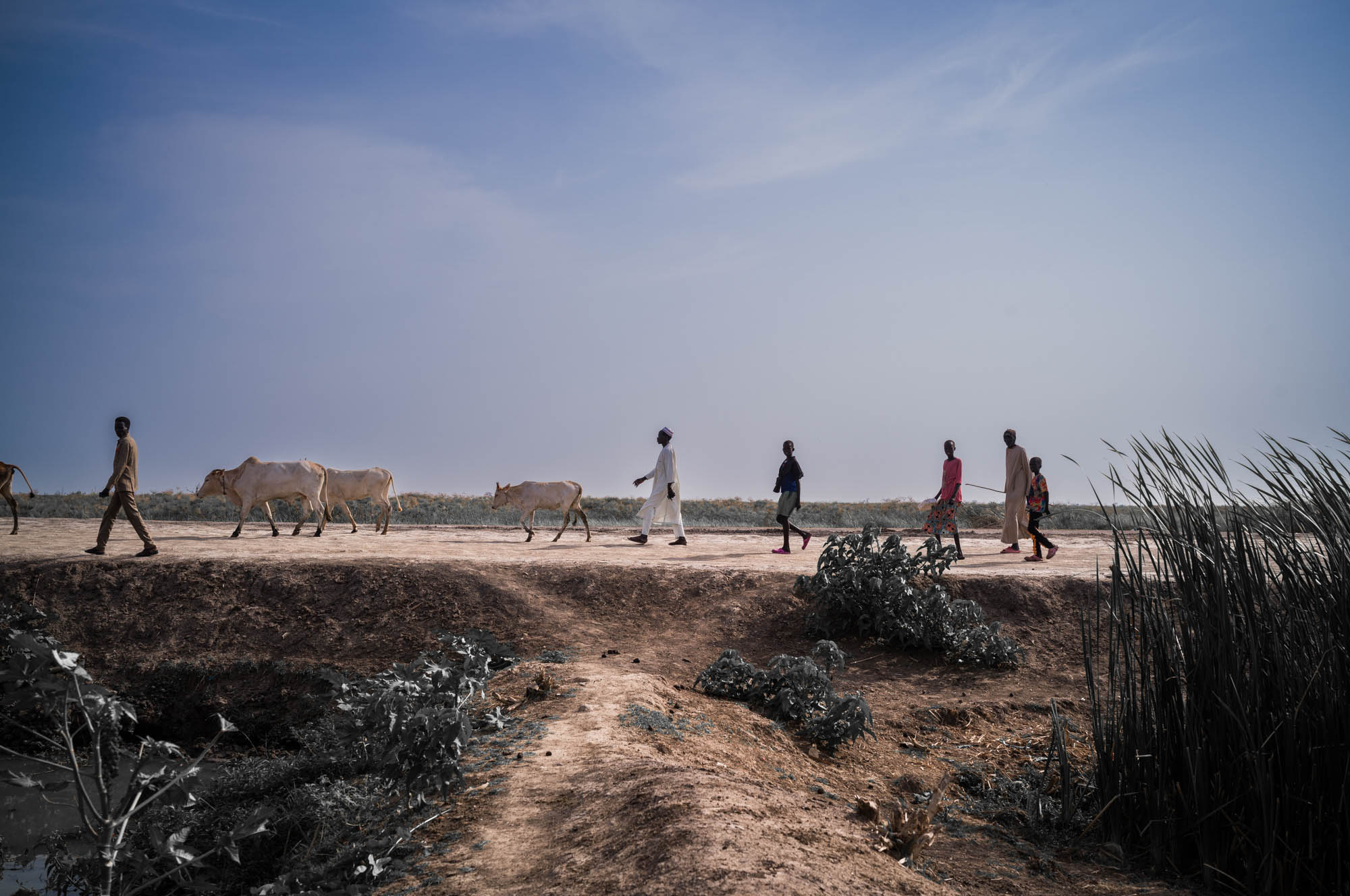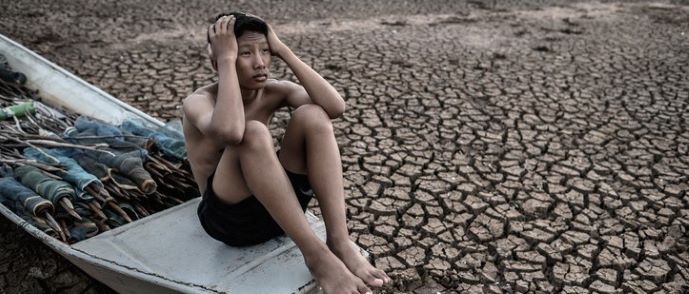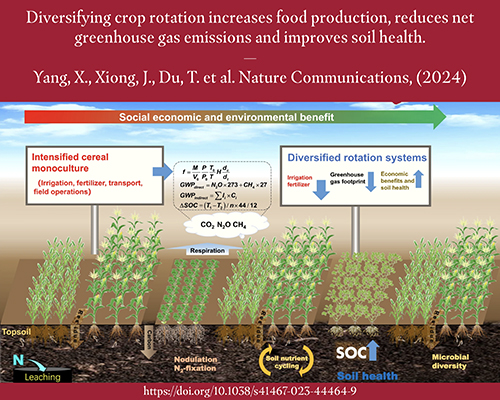Report on Climate Change Mitigation and Adaptation in the Context of the Sustainable Development Goals
Climate change, driven by a 182-fold increase in global carbon dioxide emissions since 1850, has elevated global temperatures by 1.3°C above pre-industrial levels. The resulting intensification of natural disasters leads to approximately 60,000 fatalities annually, directly undermining SDG 3 (Good Health and Well-being). A comprehensive global response, centered on the principles of SDG 13 (Climate Action), necessitates a dual strategy of climate mitigation and adaptation to protect populations and planetary systems.
Climate Mitigation: Aligning with SDG 7, SDG 14, and SDG 15
Climate mitigation encompasses actions designed to reduce or prevent the emission of greenhouse gases, thereby lessening the future severity of climate impacts. Effective mitigation is fundamental to achieving long-term climate stability and supports several Sustainable Development Goals.
Key Mitigation Strategies and SDG Linkages
- Energy Transition: Shifting from fossil fuels to renewable energy sources is the foremost mitigation strategy. Solar and wind power are projected to constitute 95% of renewable capacity growth, directly advancing SDG 7 (Affordable and Clean Energy).
- Protection of Carbon Sinks: Enhancing natural carbon sinks is critical. This includes protecting and expanding forests, wetlands, and grasslands, which aligns with SDG 15 (Life on Land), and safeguarding marine ecosystems, which supports SDG 14 (Life Below Water).
- Sustainable Agriculture: The agricultural sector accounts for up to one-third of global emissions. Transitioning to sustainable practices contributes to mitigation efforts while also supporting SDG 2 (Zero Hunger) and SDG 15.
Climate Adaptation: Protecting Communities and Ecosystems in line with SDG 11
Climate adaptation involves adjusting social, economic, and ecological systems to reduce vulnerability to the current and future effects of climate change. These measures are crucial for building resilience, particularly in the most exposed regions, and are central to the realization of SDG 11 (Sustainable Cities and Communities).
Key Adaptation Strategies and SDG Linkages
- Resilient Infrastructure: Urban areas face significant threats from extreme weather. Developing climate-resilient infrastructure, such as reinforced buildings and improved transportation networks, is a core component of achieving SDG 11.
- Coastal Protection: Small Island Developing States (SIDS) are acutely vulnerable to sea-level rise. Adaptation strategies include nature-based solutions like mangrove restoration (SDG 14) and engineered defenses.
- Social Adaptation Measures: In cases of extreme risk, adaptation may require relocating communities or establishing new migration pathways, such as Australia’s climate visa for Tuvalu citizens. These actions address SDG 10 (Reduced Inequalities) by providing solutions for the most affected populations.
Global Disparities in Climate Action and SDG Implementation
A significant imbalance exists in the global approach to climate action, with efforts and funding disproportionately favoring mitigation over adaptation. This disparity hinders the achievement of the SDGs in the world’s most vulnerable nations.
Funding and Strategic Imbalances
- Funding Disparity: Approximately 91% of climate finance in 2021-2022 was allocated to mitigation projects. The chronic underfunding of adaptation undermines the capacity of Least Developed Countries (LDCs) and SIDS to cope with climate shocks, impeding progress on SDG 1 (No Poverty) and SDG 10.
- Differentiated Vulnerability: LDCs and SIDS possess limited financial resources and resilience to climate impacts. Developed nations, with greater historical responsibility for emissions, must increase support for adaptation initiatives in these regions, fulfilling the principles of SDG 17 (Partnerships for the Goals).
The Interdependence of Mitigation and Adaptation for Achieving the 2030 Agenda
Mitigation and adaptation are not mutually exclusive; they are interdependent strategies that reinforce one another. Successful mitigation reduces the long-term need for adaptation, while effective adaptation builds economic and social resilience, freeing up resources for further mitigation efforts.
For example, protecting forests (mitigation and SDG 15) also reduces the impact of floods (adaptation), safeguarding communities (SDG 11). Similarly, building effective flood defenses (adaptation) prevents economic losses, allowing for greater investment in renewable energy (mitigation and SDG 7).
Conclusion: A Unified Approach for a Sustainable Future
Addressing the climate crisis requires a balanced and integrated approach that gives equal weight to mitigation and adaptation. Achieving SDG 13 (Climate Action) is a prerequisite for the success of the entire 2030 Agenda for Sustainable Development. A concerted global effort, prioritizing the needs of the most vulnerable and ensuring adequate financing for both strategies, is essential to prevent further environmental degradation and build a resilient, sustainable future for all.
Analysis of Sustainable Development Goals in the Article
1. Which SDGs are addressed or connected to the issues highlighted in the article?
The article on climate change mitigation and adaptation addresses several Sustainable Development Goals (SDGs) due to the cross-cutting nature of climate change. The following SDGs are directly connected to the issues discussed:
- SDG 13: Climate Action: This is the central theme of the article. The entire text revolves around the global response to climate change, detailing the two primary strategies of mitigation (reducing emissions) and adaptation (building resilience).
- SDG 7: Affordable and Clean Energy: The article explicitly identifies the transition “away from fossil fuels to cleaner forms of renewable energy” as a primary mitigation strategy, directly aligning with the goal of ensuring access to clean energy.
- SDG 11: Sustainable Cities and Communities: The article discusses the impact of climate change on urban areas, mentioning that extreme weather events “can disrupt urban infrastructure by damaging roads and destroying homes,” and highlights the need for “climate-resilient infrastructure and buildings.” It also begins by stating the number of deaths caused by natural disasters.
- SDG 15: Life on Land: The role of terrestrial ecosystems is highlighted as a key mitigation strategy. The article points to “projects to increase forest coverage and protect natural environments like wetlands and grasslands” as necessary actions.
- SDG 2: Zero Hunger: The article connects climate mitigation to agriculture, noting that shifting to “sustainable agricultural practices can also help significantly reduce emissions,” which is a core component of sustainable food systems.
- SDG 9: Industry, Innovation and Infrastructure: The need for resilient infrastructure is a key theme in the adaptation section. The article emphasizes building “climate-resilient infrastructure” and gives examples like flood barriers to reduce economic damage.
- SDG 10: Reduced Inequalities: The article underscores the disproportionate impact of climate change on vulnerable nations, stating that “least developed countries and SIDS are shown to be less resilient to climate shocks.” It also discusses the disparity in funding and the specific challenges faced by nations like Tuvalu.
- SDG 17: Partnerships for the Goals: The discussion on climate finance, including the criticism of the Global Environment Facility (GEF) and the significant “disparity in funding between climate mitigation and adaptation efforts,” directly relates to the goal of strengthening global partnerships and mobilizing financial resources for developing countries.
2. What specific targets under those SDGs can be identified based on the article’s content?
Based on the article’s discussion of specific actions and challenges, several SDG targets can be identified:
- Target 13.1: Strengthen resilience and adaptive capacity to climate-related hazards and natural disasters in all countries.
- Explanation: The entire section on “Adaptation” is dedicated to this target. It discusses efforts to reduce climate risks by “adjusting existing systems to reduce vulnerability,” building climate-resilient infrastructure, and implementing disaster risk reduction measures, particularly for vulnerable regions like Small Island Developing States (SIDS).
- Target 7.2: By 2030, increase substantially the share of renewable energy in the global energy mix.
- Explanation: The article identifies transitioning “away from fossil fuels to cleaner forms of renewable energy” as a foremost mitigation strategy. It specifically mentions that “Solar PV and wind in particular account for 95% of all renewable capacity growth,” directly supporting this target.
- Target 11.5: By 2030, significantly reduce the number of deaths and the number of people affected and substantially decrease the direct economic losses relative to global gross domestic product caused by disasters.
- Explanation: The article opens by stating that “Natural disasters exacerbated by global warming kill some 60,000 people every year,” highlighting the urgency of this target. The adaptation strategies discussed, such as building resilient infrastructure, aim to reduce these impacts.
- Target 9.1: Develop quality, reliable, sustainable and resilient infrastructure… to support economic development and human well-being.
- Explanation: The article explicitly calls for local governments to “build more climate-resilient infrastructure and buildings” to cope with increasingly frequent and severe extreme weather events. The example of constructing an “effective flood barrier” also aligns with this target.
- Target 15.2: By 2020, promote the implementation of sustainable management of all types of forests, halt deforestation, restore degraded forests and substantially increase afforestation and reforestation globally.
- Explanation: The article identifies carbon sinks like forests as “our biggest natural allies in reducing emissions” and describes “projects to increase forest coverage” as a “necessary mitigation strategy,” which directly corresponds to this target.
- Target 13.a: Implement the commitment undertaken by developed-country parties… to a goal of mobilizing jointly $100 billion annually… to address the needs of developing countries in the context of meaningful mitigation actions and transparency on implementation and fully operationalize the Green Climate Fund through its capitalization as soon as possible.
- Explanation: The article highlights a major challenge related to this target by pointing out that adaptation is “considerably more underfunded than mitigation” and that there is a “significant disparity in funding.” It criticizes financial mechanisms for a perceived bias, which speaks to the difficulties in mobilizing adequate and balanced climate finance for developing nations.
3. Are there any indicators mentioned or implied in the article that can be used to measure progress towards the identified targets?
Yes, the article mentions several specific data points and metrics that serve as indicators for measuring progress on climate action and related SDGs.
- Indicator for Target 11.5 (Number of deaths attributed to disasters): The article provides a direct statistic: “Natural disasters exacerbated by global warming kill some 60,000 people every year.” This figure serves as a baseline indicator for measuring progress in reducing disaster-related deaths.
- Indicator for Climate Change (GHG Emissions): The article quantifies the increase in greenhouse gas emissions, stating that “global carbon dioxide emissions have increased 182-fold, from 204 million tonnes in 1850 to 37,100 million tonnes in 2022.” Tracking this number is a primary indicator of the success of mitigation efforts.
- Indicator for Climate Change (Global Temperature): The article states, “the planet is now 1.3C warmer than it was in the pre-industrial era.” This is a key indicator used globally to track the overall progress of climate action under SDG 13.
- Indicator for Target 7.2 (Share of renewable energy): The article implies an indicator for renewable energy growth by noting that “Solar PV and wind in particular account for 95% of all renewable capacity growth through the end of this decade.” This percentage reflects the increasing share of renewables.
- Indicator for Target 13.a (Climate Finance Flows): A clear indicator of financial flows is provided: “In 2021 and 2022, approximately 91% of funding to combat climate change was directed towards climate mitigation efforts.” This statistic measures the allocation of climate finance and highlights the imbalance between funding for mitigation and adaptation.
4. Table of SDGs, Targets, and Indicators
| SDGs | Targets | Indicators |
|---|---|---|
| SDG 13: Climate Action | 13.1: Strengthen resilience and adaptive capacity to climate-related hazards and natural disasters. | Global temperature increase (“1.3C warmer”). |
| SDG 7: Affordable and Clean Energy | 7.2: Increase substantially the share of renewable energy in the global energy mix. | Share of renewable capacity growth (Solar and wind account for “95% of all renewable capacity growth”). |
| SDG 11: Sustainable Cities and Communities | 11.5: Significantly reduce the number of deaths and people affected by disasters. | Number of deaths from disasters (“60,000 people every year”). |
| SDG 9: Industry, Innovation and Infrastructure | 9.1: Develop quality, reliable, sustainable and resilient infrastructure. | Implementation of climate-resilient infrastructure projects (e.g., flood barriers, resilient buildings). |
| SDG 15: Life on Land | 15.2: Promote sustainable management of all types of forests, halt deforestation, and increase afforestation. | Implementation of projects to increase forest coverage. |
| SDG 17: Partnerships for the Goals | 13.a: Implement the commitment by developed countries to mobilize climate finance for developing countries. | Allocation of climate finance (“91% of funding… was directed towards climate mitigation efforts”). |
Source: earth.org







